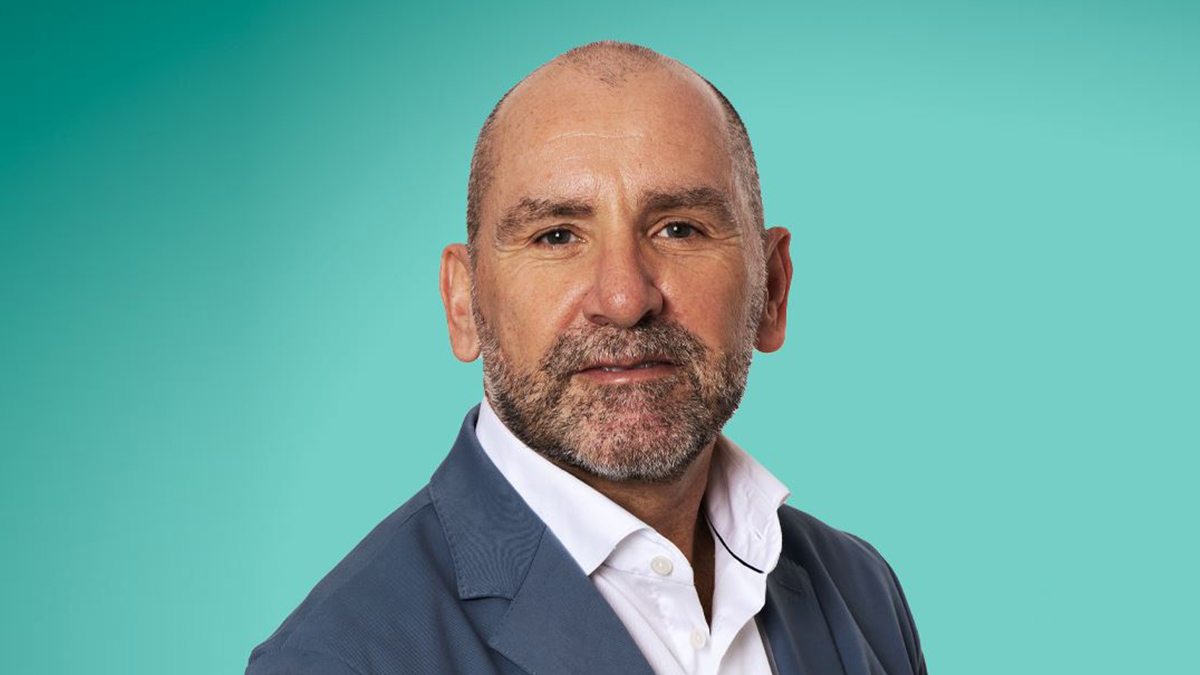Fidelis reaps rewards from managing climate risk: Burrows
‘We have a mature portfolio but as proof of concept, we’re smashing it out of the park,’ Fidelis Insurance Holdings chief executive, Dan Burrows, says
Bermudian re/insurer’s chief executive outlines how its year-to-date financial results are a reflection of a successful strategy that slashed catastrophe and large losses
Fidelis Insurance Holdings has had a busy year, capped off with strong financial results, and its approach to climate risk has been a prominent factor behind its success, according to its chief executive, Dan Burrows.
There have been two key developments for the Bermudian re/insurer in 2023: first, the creation in January of Fidelis MGU, a separate managing general underwriter to sit alongside Fidelis Insurance Holdings’ existing rated insurance entities; second, the closing in July of its initial public offering (IPO), which raised $89.4m and will boost its bespoke and specialty businesses.
Fidelis Insurance Holdings’ underwriting income for the nine months to September 30 was nearly $233m, compared with a loss of more than $17m for the same period of 2022, and the combined ratio improved to 82.4% from 101.6%. Fidelis says the improvement was driven by “significantly” lower – down 63% – catastrophe and large losses.
In an interview with Insurance Day, Burrows outlines how this improvement is thanks, in large part, to how Fidelis embeds climate change into its underwriting. “We started optimising our portfolio in 2021 as we evolved our view of risk and it’s good to see how that repositioning, in terms of proximity to loss, has really helped our portfolio with very limited downside,” he says. “We believe $100bn is the new normal for the annual aggregate of insured losses from natural catastrophes, but we’ve had very limited loss activity resulting from that, which has been very pleasing.”
Put simply, Fidelis stress-tested its book according to the level of exposure to climate perils and geographies it felt comfortable with.
Burrows says: “We were factoring in climate change inflation long before most of our peers were, which enabled us to recalibrate our pricing model to make sure we were participating at the right level of exposure, but also getting the terms and conditions right. Then we tiered our client base by strength of management teams, capitalisation and in-house claims handling capabilities.
“All of that plays out when you think about losses like Hurricane Ian and the prior-year claims development associated with that, and it has positive effects because you’re dealing with very professional management teams who do a lot of that claims calibration in-house.”
21st century weather
The new normal for the industry of $100bn in catastrophe losses each year has been compounded, Burrows says, by sustained capital constraints, with no notable inflow of new capital.
“We’ll continue to take advantage of the opportunities these factors create,” he says. “The leverage created through our leadership and relevance to clients enables us to deliver superior underwriting margin, deploying our significant line size to take advantage of differential pricing in an increasingly verticalised market.”
Crucially, Fidelis was an early mover when it came to embedding climate change into its underwriting as part of its “ever-evolving” view of risk.
Burrows says: “In 2021, we didn’t think the market was pricing climate risk correctly, but we’d been working with Dr Jeff Masters – founder of Weather Underground – who famously said the industry was using 20th century data for 21st century weather. That resonated because climate risk had been a serious consideration for us since we formed Fidelis in 2015.
“We’re not looking for top-line growth if that compromises our underwriting integrity and bottom-line profitability. There’s a lot of businesses to look at in the next few quarters in bespoke and we’re seeing no negative trends in terms of volume, but any new business has to hit our hurdle rate”
Dan Burrows
Fidelis Insurance Holdings
“Certainly in the late 2000s and early 2010s, the market in general wasn’t seriously evaluating the secondary peril effect and was buying and selling covers that were just too low. That naïve capital has since left the market and now there’s a transference of attritional loss to the primary carriers, rather than being ceded into reinsurance. From there, it’s about continued improvement in price terms and conditions.”
Burrows declines to comment on the company’s Herbie Re catastrophe bonds following losses from Hurricane Ian and the earthquake in Turkey, saying “we can’t give out claims details”. He does, however, say Fidelis is “looking forward to” renewing these bonds next year and the process for this has “already started”.
He adds: “The bonds are an important part of our fungible capital and how we view reinsurance. My career background is the retrocession world and our chief underwriting officer was also a buyer at PartnerRe, so we have a lot of that experience in-house.”
Three pillars
Fidelis saw its gross written premium rise 15% year-on-year for the first nine months of 2023 to $2.8bn. The company says its “strong” top-line growth has been coupled with “compelling” bottom-line profitability. The combined ratio improved from 101.6% to 82.4% and its year-to-date annualised operating return on average equity (RoAE) is 17.7%.
Burrows details the firm’s performance and strategy across its three pillars: specialty, bespoke and reinsurance. “Our growth in 2023 continues to be driven by our specialty insurance portfolio where, following years of compound increases across multiple lines of business, and a continued momentum in pricing, we were able to leverage our market lead position, and scale up to achieve favourable participation on targeted accounts,” he says.
Year-to-date gross written premium rose 46% in the specialty segment, with direct and facultative (D&F) property a “significant driver”, and a renewal price index (RPI) of more than 140% for this class.
“As demand and pricing in the vertical remain robust, specialty now represents 65% of year-to-date gross written premium, versus 51% for the first nine months of 2022. We continue to focus as a specialty and bespoke insurance carrier, where we see the best returns in the current market environment,” Burrows says.
While bespoke was down in the third quarter year-on-year, Fidelis remains confident in this pillar of its business for the long term.
Burrows says: “Our lead position, along with the non-recurring nature of contracts, allows us to be particularly selective. This segment is more insulated from traditional insurance market cycles than specialty and reinsurance and the deal flow is impacted by underlying transactional activity and sensitivities to economic and geopolitical trends.
“Given the lingering concerns around the current environment, we are deliberately taking a measured approach within this segment affecting dealer dynamics. This is a strategy we have deployed successfully before, where in 2020 we took a similar approach when Covid created uncertainty in the market. The portfolio performed well and enabled us to take advantage of opportunities as market conditions changed.”
Describing the company’s prospects in bespoke as a “robust pipeline”, Burrows stresses this is not growth for growth’s sake. “We’re not looking for top-line growth if that compromises our underwriting integrity and bottom-line profitability,” he says. “There’s a lot of businesses to look at in the next few quarters in bespoke and we’re seeing no negative trends in terms of volume, but any new business has to hit our hurdle rate.”
By hurdle rate, Burrows means the company’s return metric for each line of business, on which it refuses to compromise. “Each deal has to stand on its own two legs and has to be accretive to the portfolio,” he says.
In its reinsurance portfolio, Fidelis continues to experience favourable rating, Burrows says, and has been able to maintain year-on-year gross written premium levels “despite significant optimisation and repositioning of the portfolio in line with our view of risk”.
“We continue to carefully manage our capital deployment, managing volatility and exposures with targeted participation of select programmes and in select geographies. Premium levels in this space have been significantly rate-driven, with a year-to-date RPI of 168%,” he says.
“A strong market position across all lines of business means we can achieve differential pricing and terms and our expertise across underwriting and capital management, enabling us to opportunistically navigate the market and respond to prevailing conditions in conjunction with our partners at the MGU,” he adds.
Burrows highlights the strength of Fidelis Insurance Holdings’ alignment with Fidelis MGU.
“This is really about core competencies and maximising abilities, which we call the amplification benefit,” he says, pointing out the MGU’s chief executive, Richard Brindle, can now spend most of his time on underwriting.
Burrows says: “A CEO of a public insurance company would normally be lucky to spend 20% of his or her time doing that. As the capital managers, we want our underwriters to be in the transaction moment for as long as they possibly can be, networking distribution and concentrating on the dynamics of the deal. It’s why we’ve had a fantastic combined ratio for the first nine months of the year, which is about 10 points better than in our plan.
“Similarly, our RoAE was 17.7% although we’d publicly commented in the IPO our target range was 13% to 15%. We’re outperforming on all the key metrics.”
A long hard market
In terms of product lines, the three key drivers of growth have been property insurance, D&F and excess and surplus.
“This is probably the hardest market any of us at Fidelis have seen in our three or four decades of trading, and we’re still seeing significant rate increases there,” Burrows says.
“The shortage of capacity could already be seen in 2018/19 when huge line sizes just pulled back, and we still see the impact of that today. But being a lead market in that environment, you dictate terms, you dictate pricing, you can leverage relationships. The challenge is always managing expectations but, ultimately, it’s about measured growth, preserving underwriting integrity, preserving the bottom line.”
On his expectations from the January 1 reinsurance renewals, Burrows says Fidelis declines to “give guidance”, adding: “What we will say is, there doesn’t need to be tonnes of capacity coming into the market or new capital, as long as everyone is disciplined. If other reinsurers are managing their capital the same way we are, then this hard market has real duration.”
The phrase “orderly renewal” has become a cliché, he continues.
“We keep hearing this ‘orderly renewal’ comment, which basically means how well the brokers have acclimatised their clients to developments in the market. Putting our buying hat on, we’ve realised there are, in certain areas, severely dislocated lines of businesses with supply and demand imbalances. For those who, like us, view long-term relationships as being important, it will be a more orderly renewal than it will be for those that are more opportunistic.”
The main thing, he adds, is Fidelis is in no hurry, demonstrated by the fact it waited two years before launching its IPO.
He concludes: “When we launched, one of our backers remarked he’d first received the email about our IPO ‘660 days ago’. We did wait and 2023 has been a year of outperformance for Fidelis. Yes, we’ve got a mature portfolio but, as proof of concept, I think we’re smashing it out of the park.”



